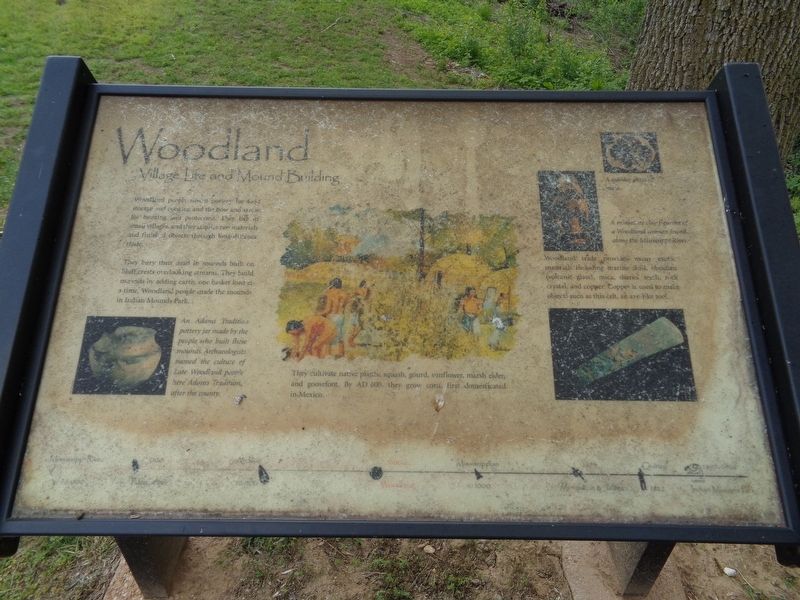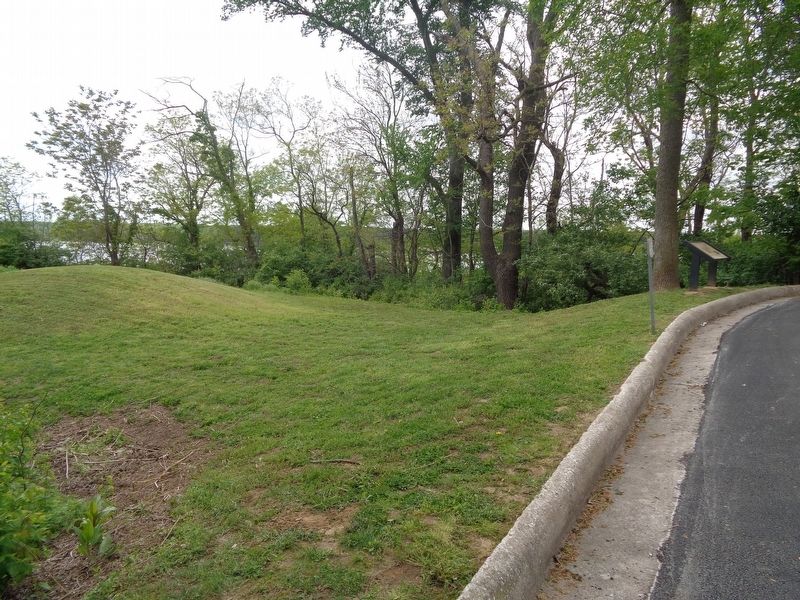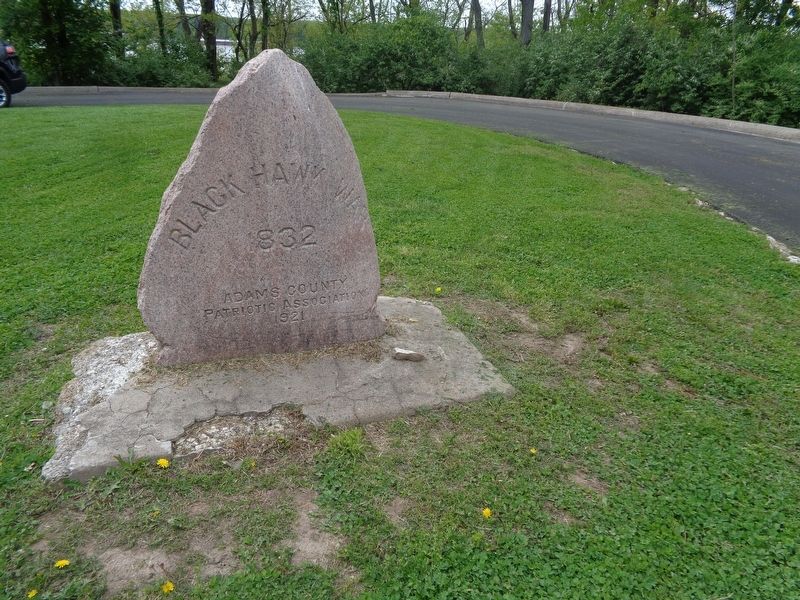Quincy in Adams County, Illinois — The American Midwest (Great Lakes)
Woodland
Village Life and Mound Building
Woodland people invent pottery for food storage and cooking and the bow and arrow for hunting and protection. They live in small villages, and they require raw materials and finished objects through long-distance trade.
They bury their dead in mounds built on bluff crests overlooking streams. They build mounds by adding earth, one basket load at a time. Woodland people made the mounds in Indian Mounds Park.
Woodland trade provides many exotic materials including marine shell, obsidian (volcanic glass), mica, sharks' teeth, rock crystal, and copper. Copper is used to make objects such as this celt, an axe-like tool.
Topics. This historical marker is listed in these topic lists: Anthropology & Archaeology • Cemeteries & Burial Sites • Native Americans • Settlements & Settlers.
Location. 39° 54.93′ N, 91° 24.635′ W. Marker is in Quincy, Illinois, in Adams County. Marker is on Indian Mounds Park west of South 5th Street, on the right when traveling west. Marker is on the grounds of Indian Mounds Park. Touch for map. Marker is in this post office area: Quincy IL 62301, United States of America. Touch for directions.
Other nearby markers. At least 8 other markers are within walking distance of this marker. Mississippian (within shouting distance of this marker); Marquette & Jolliet (within shouting distance of this marker); Archaic (within shouting distance of this marker); Paleoindian (about 400 feet away, measured in a direct line); Quincy (about 500 feet away); Indian Mounds Park (about 500 feet away); The Monument (approx. ¼ mile away); Honoring Soldiers (approx. ¼ mile away). Touch for a list and map of all markers in Quincy.
More about this marker. (photo captions:)
An Adams Tradition pottery jar made by the people who built these mounds. Archaeologists named the culture of Late Woodland people here Adams Tradition, after the county.
They cultivate native plants: squash, gourd, sunflower, marsh elder, and goosefoot. By AD 600, they grow corn, first domesticated in Mexico.
Credits. This page was last revised on August 25, 2020. It was originally submitted on May 20, 2020, by Jason Voigt of Glen Carbon, Illinois. This page has been viewed 123 times since then and 6 times this year. Photos: 1, 2, 3. submitted on May 20, 2020, by Jason Voigt of Glen Carbon, Illinois. • Devry Becker Jones was the editor who published this page.


